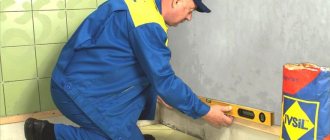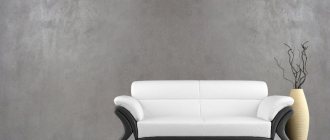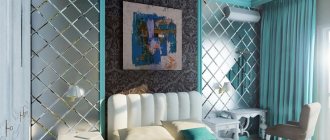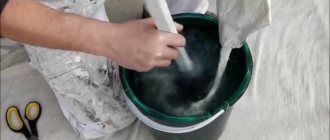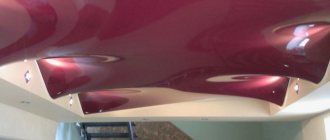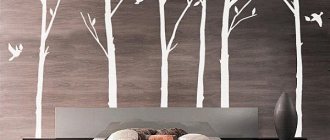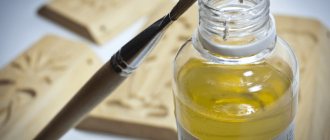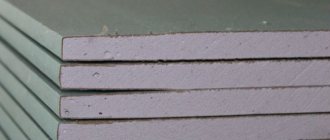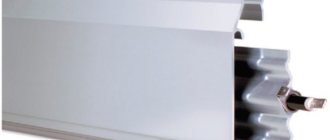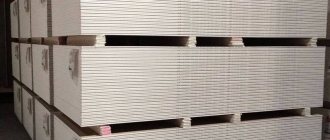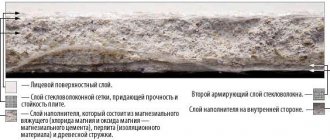- Glass-magnesium sheet: a modern and multifunctional analogue of drywall
- Glass-magnesite sheet: getting acquainted with a new modern building material
- Advantages and disadvantages of glass-magnesium plates
- Glass-magnesium sheets: technical characteristics of SML
- Glass-magnesium plates: characteristics and features of the use of the material
- Variety of applications for glass magnesium sheets
- How much does it cost to build a house with sml panels?
- Painted sml: features and characteristics of the material
- Estimated price of glass-magnesium sheets
- Tips for choosing a quality glass-magnesium plate
- Video: glass-magnesium sheet, sml
Glass-magnesium sheet: a modern and multifunctional analogue of drywall
At present, glass-magnesium sheet is a very popular material that is used in all areas of construction. It replaced universal drywall. LSU sheets are a modern material, which is a composite glass-magnesium plate. You will learn about the characteristics of glass-magnesium sheets, their features, areas of use, and much more from this publication.
Gypsum fiber sheet: main types, price, dimensions, technical parameters (read more)
Magnesium glass sheet is a modern material that is actively used in finishing work.
Glass-magnesite sheet: getting acquainted with a new modern building material
Glass-magnesium sheets, or magnetite, are a completely new sheet material that is widely used in all areas of construction, although it appeared on the market not so long ago. The construction sheet is used for both internal and external finishing work. Magnelite, magnesite and glass-magnesite boards, magnesite panels, SML - all these are names for the same glass-magnesium material.
Glass-magnesite plates are easy to use, have good characteristics and low cost.
LSU panels are distinguished by their durability and excellent water resistance. The material is very similar in its properties to plasterboard, which makes it very competitive in the market for finishing products. Purchasing a construction material will not be difficult, since many companies sell it.
The popularity of glass-magnesium plates is explained by their excellent characteristics, ease of processing and reasonable price. Although the material can be easily cut with a jigsaw, saw, drywall knife and other similar tools, this does not mean that magnetite is weak. On the contrary, LSU board is durable and flexible. In addition, during processing of the material, virtually no dust or debris is generated.
On a note! When choosing a material, you must be guided by the method of use. For external use, SML premium is best suited. The cost of such panels is several times higher than the price of conventional ones, but the quality characteristics of glass-magnesium sheets allow them to easily withstand the effects of natural factors.
Composition of glass-magnesite plate.
SML panels are produced from magnesium binder and fiberglass mesh, which performs reinforcing functions. Magnesium binder is a type of concrete that is obtained by the interaction of magnesium chloride and caustic magnesite. Classification of LSU panels is carried out depending on the thickness of the sheet and individual quality characteristics. There are also LSU options that are used as decoration. This type of panels does not require additional finishing. Decorative sheets are available in the market in a wide range of colors.
Installation conditions for glass-magnesium sheets:
- A standard LSU with dimensions 1220×2500×8 has a weight of 19 kg. Its bending strength properties are 2 times higher than those of drywall. According to the set of rules SP 55-101-2000, the design used for fastening drywall can also be used for LSU. In this case, during the installation of glass-magnesium sheets, it is recommended to take into account their typical width, according to which it is necessary to take a step of 406 mm between the axes of the vertical posts.
- Self-tapping screws of type TN 25 or their analogues should be used when attaching LSU to the supporting structure. In accordance with SP55-101-00, the fastening pitch of self-tapping screws should be 250 mm. If “Premium” category sheets are used, then it is necessary to pre-drill holes with a diameter of 2 mm for self-tapping screws.
- The seams between magnesite slabs are puttied with a variety of plaster mixtures. Using a milling machine, uneven edges are eliminated. The most optimal and convenient method for sealing joints is to use an acrylic-based sealant. The composition is applied to the end of the attached sheet, after which another sheet is attached with a gap between the ends of 0.5-0.8 mm. Excess sealant is removed after complete drying.
- LSUs have two working surfaces. The smooth side is perfect for finishing with paint, wallpaper and other decorative materials. The tiles fit well on the inside, despite its roughness.
Knowing the features of installing glass-magnesium sheets, performing the work will not be difficult. It is thanks to the ease of installation, as well as wear resistance, immunity to atmospheric and chemical influences and durability, that LSU is widely in demand not only in private construction, but also in the construction of large, entertainment and industrial institutions.
Advantages and disadvantages of glass-magnesium plates
Until recently, plasterboard had no alternatives in the building materials market. But with the advent of glass-magnesium sheet, which is more technologically advanced, the situation has changed. The high level of performance indicators is explained by the composition of the material, which includes natural and organic components. Excellent strength indicators and equal structure density are achieved through firing at a temperature of 2000 °C.
LSU boards have special advantages over other similar materials:
- Versatility. The material is used in all types of finishing: slabs less than 6 mm thick are placed on ceilings, 6 mm sheets are suitable for walls, 10 mm building sheet is laid on the floor, magnetite 12 mm thick or more is used to create facade cladding and interior partitions.
- Strength. Magnelite plates can easily withstand any mechanical damage.
- Density. Budget material has a density of about 1 kg per m³, luxury sheets have a density of more than 1.5 kg per m³.
- Ease of processing. Manelite is easy to cut, does not crumble, does not break.
- Fire safety. Withstands temperatures over 1000 °C, prevents the spread of fire.
- Moisture resistance. The slab does not absorb water, does not swell, does not swell, does not change shape, and also does not rot, and is not afraid of mold and mildew.
- Environmentally friendly. Does not cause allergies.
LSU sheets have high strength and are distinguished by their versatility of use.
All these parameters indicate that, regardless of the application, glass-magnesium plates are the best option. The sheets are durable, they are stronger than drywall and cheaper than tiles. Despite all the advantages, the price of glass-magnesium sheets is quite affordable, which allows the material to be used without restrictions.
As for the disadvantages, they are typical for LSU sheets when low-quality material is used.
They appear like this:
- A decrease in quality, resistance to fire and moisture occurs due to the addition of asbestos, lime and chalk to the composition of the material by some unscrupulous manufacturers. This also leads to the appearance of fine dust, which is very dangerous for allergy sufferers.
- Low quality slabs emit salts that accelerate the decay process. This can have a negative impact on the metal structures of frames and formwork.
SML boards have such advantages as moisture resistance and fire safety.
Also, the disadvantages include the price per LSU sheet. But the cost of the material is fully compensated by its excellent technical characteristics and parameters.
Advantages and disadvantages of using magnesite in construction
The technical characteristics described above, which glass-magnesium sheets have, provide the following advantages when using them.
- Moisture resistance. By installing such slabs, you can be sure that their shapes and sizes will remain unchanged from exposure to high humidity. One can say even more - magnesite successfully resists the effects of superheated steam.
- Environmental friendliness - magnesite does not contain asbestos and other harmful materials.
- Strength and hardness. This material, unlike gypsum board, cannot be punched with a fist.
- Sound insulation and thermal insulation - these qualities are best promoted by the layered structure of magnesite.
- Fire resistance. This non-combustible material has found its place in the decoration of fireplaces.
- Elasticity – glass-magnesium plates can be bent to almost any radius. In contrast, it will not be possible to bend drywall along a small radius.
- Light weight and easy to install. Working with such materials is no more difficult than working with drywall.
- High degree of adhesion to any building materials. It can be glued to the wall, magnesite can be attached with self-tapping screws, puttyed, plastered and covered with wallpaper. In this respect, it is practically no different from drywall.
Advantages and disadvantages of glass magnesium sheet
The disadvantages that glass-magnesium sheets have can be counted on one hand. These include only two things - its cost, which is several times higher than drywall, and also high strength, if considered from the point of view of processing this material.
If you are going to cut magnesite with a hacksaw or jigsaw, then you should take care of an impressive supply of replacement files. They get dull very quickly!
How to cut glass-magnesium sheet photo
Glass-magnesium sheets: technical characteristics of SML
Typically, a magnesite plate consists of the following materials:
- expanded perlite – 5%;
- magnesium oxide – 40%;
- magnesium chloride – 35%;
- fine wood shavings – 15%;
- fiberglass – 1%.
Synthetic fibers are added to the composition as additional binders, and perlite significantly increases sound insulation characteristics. The main properties of glass-magnesium sheets: strength, hardness, fire resistance and moisture resistance. The material is resistant to fungi and mold, and is able to maintain its shape for a long time under the influence of a humid environment.
Glass-magnesite panels are resistant to the formation of fungus and mold.
This table will help you get acquainted with the parameters of glass-magnesium sheets in detail.
| Technical specifications | Meaning |
| Slab thickness | From 3 to 20 mm |
| Weight (for sheet 8 mm thick) | From 18 to 24 kg (weight depends on the class of material) |
| Bending resistance force (wet - dry state) | 17.2-22 MPa |
| Face hardness | 52.7 MPa |
| Waterproof | 95% |
| Frost resistance | 50 cycles or more |
| Sound insulation coefficient | 46 dB |
| Coefficient of thermal conductivity | 0.21 W/m |
| Fire resistance (for sheet 8 mm thick) | Capable of holding fire for two hours |
| Fire resistance | When heated to +1200 °C the fire does not support |
| Density | From 980 to 1050 kg/m³ |
| Humidity | From 9 to 11% |
| Wet deformation | No more than 0.34% |
| Temperature coefficient of linear expansion | Not measured |
As for strength, the material is quite dense, has a uniform texture, and does not delaminate during operation. Thanks to its increased density characteristics, it has increased wear resistance to mechanical damage and deformation loads.
Advantages and disadvantages
The advantage of glass magnesite sheets is as follows:
lightweight material compared to drywall;- durable, resistant to horizontal and vertical loads;
- flexible, which allows the production of curved and multi-level structures;
- resistance of the material to moisture; use it in places with high humidity; for these purposes it is used - class “A” premium 01;
- high sound insulation, thanks to perlite, which is used in the composition;
- it is processed well, the same tools are used for processing as when processing gypsum plasterboard, it is easy to cut with a construction knife, does not generate dust and does not split;
- high adhesion to finishing materials without the use of a primer, since the sides are already prepared at the factory;
- a wide range of sizes allows you to implement many design solutions, the standard sheet size is 1220x2440 mm, thickness varies from 3 to 20 mm;
- glass-magnesite sheets are available in various colors and with different textures.
Glass-magnesium plates: characteristics and features of the use of the material
Glass-magnesite sheet SML is very easy to process. The initial edge of the slab can be easily cut with a regular construction knife, after which the sheet must be bent in the opposite direction at the place where the cut was made. Then the bend is cut in the same way.
According to the flexibility criteria, the SML board resembles plasterboard, plywood, OSB, and DSP panels. Without moistening and heating, magnetite practically does not have this indicator.
Glass magnesite is a fairly flexible material, so it is easy to cut.
Due to their high level of moisture resistance, glass-magnesium boards can be used for treating rooms exposed to humidity: baths, saunas, shower rooms, swimming pools, as well as for any external finishing work. This construction sheet does not absorb water and does not change its structure, does not swell, does not crack from moisture during the operational period. According to laboratory studies, premium magnesite board does not change its properties even after 100 days in water.
Drywall: price per sheet, sizes, types of material (read more)
It should be noted that LSU sheets are environmentally friendly. To produce the material, only natural and natural substances are used that do not harm humans and the environment. Magnesite boards do not contain asbestos and other harmful components.
Magnesium glass plates are a very popular material today. This is primarily due to ease of installation. Magnelite is ideal for installation on both plasterboard profile systems and wooden frames. Fastening is carried out using self-tapping screws MN or TN 25-65. For these purposes, you can also use screws with a sharp drilling tip SN and SB 25-40.
In the case of using premium class A slabs, you need to do light drilling under the screw head. For other types of this material, namely for classes B - G, this need not be done, since the screw fits perfectly into the surface of the magnesite sheet. The exceptional strength of the SML board allows installation even with the help of ordinary nails and a pneumatic gun, which is absolutely unacceptable when using drywall.
Due to the characteristics of the magnesite surface, there is no need to prime the surface before filling.
The use of magnetite can significantly save money and time, since the surface of the material does not require priming before puttying, facing with ceramic tiles or wallpapering. And the sound insulation of a room lined with magnesite sheets doubles.
On a note! The SML board can be coated with vapor-permeable dyes. If you use waterproof paint, the top layer may swell and crack over time.
What are glass magnesium sheets?
This building material has a rather interesting structure. It contains magnesium oxide (MgO), magnesium chloride (MgCl2), perlite, fine wood shavings and fiberglass mesh. Different manufacturers may have different percentages of components, and there are also differences in the composition of LSUs of different classes: Premium (class A), Standard (class B) and Economy. The higher the magnesium oxide content, the higher the strength of the material; usually the composition of Premium glass magnesium sheets contains 40% MgO and 35% MgCl2. By the way, magnesium oxide is obtained by firing magnesite, hence the second name of the material - glass magnesite.
The material is produced in the form of sheets of varying thickness (4-12 mm) and density. The most common sheet sizes are 2440×1220 mm.
The outer side of the LSU has a smooth surface, it does not require additional processing and you can immediately glue wallpaper or apply paint to it. The back side is rougher and unpolished. Installation of glass-magnesium sheets can be carried out from any side. Typically, LSU is mounted with the back side facing outwards for treatment with various plaster (due to better adhesion).
Variety of applications for glass magnesium sheets
Most often, glass-magnesium sheets are used to perform the following types of work:
- all types of external wall decoration, including stone cladding, ceramic tiles or stucco;
- internal treatment of walls for painting, wallpapering, tiling and clapboard or paneling, puttying;
- eliminating uneven surfaces of walls, ceilings and floors;
- creating interior partitions, regardless of the finishing;
As a rule, LSU sheets are used for interior finishing work.
- floor treatments for laminate or parquet;
- any architectural ideas for space decoration;
- finishing of baths, saunas, bathrooms and swimming pools;
- creation of banners, billboard advertising;
- arrangement of protective fireproof cladding near sources of spontaneous combustion;
- soundproofing works.
On a note! If plaster will be laid on top of the panel, it is better to install magnetite with the back (rough) side facing out. This will ensure a tighter adhesion of the cladding to the surface of the slab.
How much does it cost to build a house with sml panels?
Magnesium glass panels are one of the most popular materials for building a modern home. It can be used all year round, and frame-panel construction does not require special foundation construction. The energy efficiency of such buildings is much higher, and construction costs are lower, because special equipment is not required to transport the material.
What is DSP: application, technical characteristics (read more)
As for the price of an LSU house, the maximum average cost per square meter is approximately 25,000 rubles. As a result, you get a living space that you can immediately move into with your furniture. Plumbing has already been installed in the building, an electrical network, water supply, boiler have been installed, and work inside the house has been completed. The minimum cost per square meter starts from 6,000 rubles, but in such a house you will still have to work, and you will also need to spend additional financial resources.
The cost of a house made of SML slabs will vary from 6,000 to 25,000 rubles per m².
The construction process can take from two weeks to a month. This is very convenient for those who want to purchase new housing in a short time. In addition, construction can be carried out at any time of the year. Using a magnesite board allows you to quickly, efficiently and inexpensively get your dream home.
On a note! LSU sheets can be used to finish the foundation. Fastening is done with glue or using anchors. But in this case, it is extremely important to choose the right type of material, otherwise magnetite will not only not withstand frost, but will also be deformed under the influence of moisture.
Painted sml: features and characteristics of the material
Painted glass-magnesium panels are the optimal material with an ideal ratio of price, quality and excellent aesthetic characteristics. The basis of this product is a regular magnesite plate coated with acrylic paints.
To add color, glass-magnesite slabs are painted with acrylic paint.
Painting is carried out using an industrial method - direct rolling of acrylic paint using steel rollers over the entire surface of the sheet. At the final stage, a protective varnish is applied to the top layer, which provides an increased level of wear resistance.
The cost of panels is affected by the following characteristics:
- material color;
- the number of sheets that are purchased;
- slab thickness;
- number of painted sides.
Sometimes the price of magnetite depends on the category of material. All these parameters together affect the production and painting process of sheets, as well as the consumption of paints and varnishes. You can buy LSU, painted on one side, from 1400 to 1680 rubles. per sheet. Magnelite, coated with paint on both sides, will cost from 1600 to 1900 rubles. per sheet.
Suspended ceilings from SML
The use of high-quality glass-magnesite sheet allows you to obtain a multi-level suspended ceiling design, which can decorate any room. This ceiling covering can be diversified with built-in soffits and painted in any shade.
The sheets need to be attached to a specially prepared metal frame. Before installing the LSU, it is necessary to carry out electrical wiring and install all ventilation and other communication devices provided for in the project.
A ceiling made of glass-magnesite sheets can have both a rough and glossy surface. In this case, it directly depends on the method of finishing it.
Estimated price of glass-magnesium sheets
You can buy LSU panels for both interior and exterior decoration; they are used in building construction and other work. Depending on the area of application, as well as to make it easier for customers to choose, the material is divided into the following categories:
The cost of a glass magnesite board depends on the thickness of the product, strength and number of painted sides.
- “Standard” (SML sheet dimensions – 1220 by 2500 mm) costs from 460 to 730 rubles. for a unit. This material is most suitable for interior decoration of rooms with normal temperature and humidity levels throughout the year. Self-tapping screws are used for installation.
- “Premium” (SML slab measuring 1220 by 2440 mm) can be purchased for 580-960 rubles. per sheet. This magnetite is characterized by an increased level of strength, which allows it to be used for cladding the walls of low-rise buildings, installing internal walls and partitions, arranging a base for a soft roof and other indoor work. For fastening, experts recommend using stainless steel screws.
- “Superpremium” (sheet parameters – 1220 by 2440 mm). You can buy such LSU sheets from 950 to 1250 rubles. for one slab. This material is a specially released line with improved external surface parameters and the possibility of subsequent painting, lamination, plastic and veneer processing.
- “Interior” (painted magnesite slab measuring 1220 by 2440 mm). It is possible to buy painted LSU from 1290 to 1450 rubles. a piece.
The price for one sheet varies from 460 to 1450 rubles.
Application of glass magnesium sheets
Due to the fact that the fiberglass reinforcing mesh is strong and reliable, the sheet can be easily bent to any radius of curvature. This characteristic makes it possible to use the material for finishing even on uneven surfaces. In the workflow, you can reduce the risk of breaking the sheet during installation or repair. To simplify the joining of material elements, there are special chamfers on the sheet that make work easier.
Glass-magnesium sheets are convenient and easy to attach. The sheet is cut by cutting the fiberglass, and then it is broken off along the cut area. This material is good for driving nails into it, is easy to drill and is not difficult to process with a saw. The dimensions of glass-magnesium sheets are standard 2440 * 1220 millimeters, and the thickness can be 3, 6, 8, 10, 12, 14 millimeters.
Finishing with glass-magnesium sheets
Tips for choosing a quality glass-magnesium plate
Glass-magnesium sheets (GFS) have a significant number of reviews, but not all of them are positive. But the popularity of the material is not falling; on the contrary, the construction of many important government facilities is not complete without the use of magnetite. The main problem is that there is no marking on the material. Unscrupulous manufacturers take advantage of this by violating slab production technology.
There are negative reviews about glass-magnesium sheets due to incorrect definition of the scope of application. In addition, most consumers believe that LSU panels are a complete replacement for drywall. But this is not true, because only some types of stektomagnesium sheet can be fully used instead of plasterboard boards.
Since the price of a magnesite board is quite high, in order not to waste money, it is important to know how to distinguish a high-quality panel from a semi-handicraft material made from cheap components:
To choose high-quality material, you need to familiarize yourself with the recommendations of experts.
- Material color. LSU board of excellent quality has a beige or yellowish tint. Low quality material is most often white or light gray.
- Slab edges. Poor quality magnetite has uneven and brittle edges.
- Leaf base. Low-quality construction sheet is covered with non-woven material on the back side. This reduces the fire resistance of the material.
On a note! To check the quality, you can place a piece of glass magnetite in water for a couple of hours. If the slab is of high quality, the water will not become cloudy.
Interior or exterior wall decoration is constantly in great demand. Thanks to this, modern building materials will always appear on the market. At present, the latest finishing materials, including glass-magnesium sheets, are extremely popular.
Dimensions, advantages and disadvantages of gypsum plaster sheets for flooring (read more)
Thanks to modern creation technology and exclusively natural ingredients, magnesite board pushes into the background such materials as drywall and plywood. Excellent technical characteristics of glass-magnesium sheets (GMS) and price are the main advantages of this material. The peculiarity of such a construction sheet is that one side is smooth and polished, and the other is embossed.
